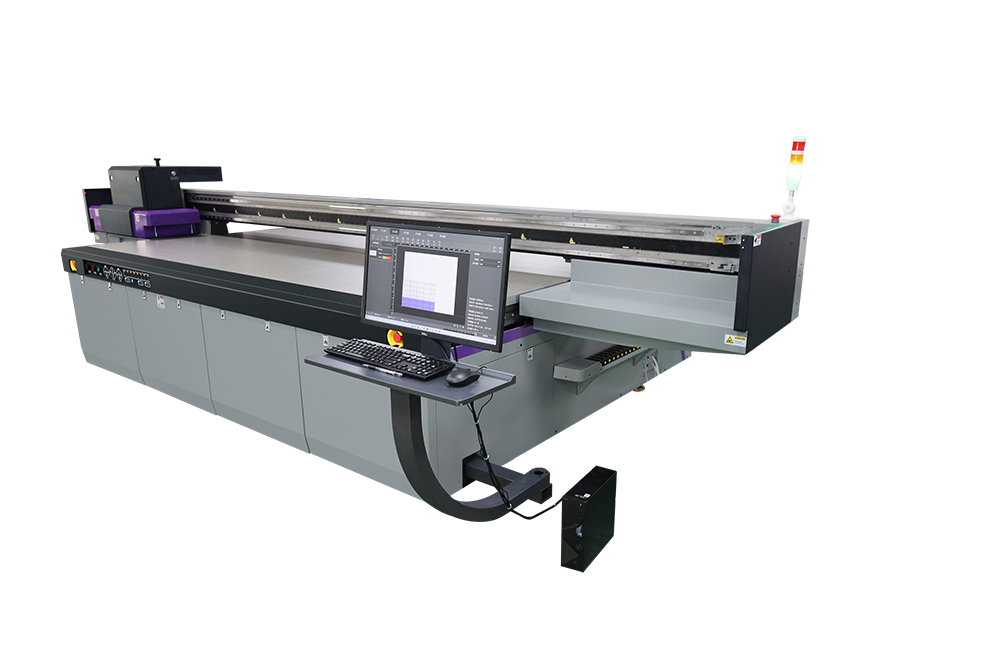UV Flatbed Printer: A Guide to Selecting the Right Ink
In the realm of digital printing, UV flatbed printers have revolutionized the way we approach print production. These versatile machines offer unparalleled flexibility, allowing for the printing of high-quality images and text onto a wide range of substrates, from rigid materials like glass and metal to flexible ones such as fabrics and plastics. One of the critical factors that determine the success of a UV flatbed printing project is the choice of ink. Selecting the right ink can significantly impact the print quality, durability, and overall cost-effectiveness of your prints. This comprehensive guide aims to navigate you through the intricacies of choosing the perfect UV ink for your flatbed printer.

Understanding UV Inks
UV inks, also known as ultraviolet-curing inks, are specially formulated to cure almost instantly when exposed to UV light. This rapid curing process is one of the hallmarks of UV flatbed printing, enabling faster production times and reducing the risk of smudging or bleeding. UV inks consist of monomers, oligomers, photoinitiators, and pigments or dyes. Each component plays a vital role in the ink’s performance characteristics.
Monomers and Oligomers: These are the building blocks of UV inks, responsible for the ink’s fluidity and its ability to form a solid film upon curing.
Photoinitiators: These compounds absorb UV light and initiate the chemical reaction that cures the ink.
Pigments and Dyes: These provide the color to the ink, with pigments offering better lightfastness and durability compared to dyes.
Factors to Consider When Selecting UV Ink
Choosing the right UV ink involves a careful consideration of several factors tailored to your specific printing needs. Here are the key aspects to evaluate:
Substrate Compatibility
The type of material you plan to print on is paramount. Different substrates require inks with specific adhesion properties. For instance, printing on a non-porous surface like glass or metal demands an ink with excellent adhesion to ensure the print doesn’t peel or crack over time. Conversely, flexible materials might require inks that maintain elasticity after curing.
Print Quality and Resolution
The desired print quality and resolution will influence your ink choice. High-resolution prints require inks that can flow smoothly and cure uniformly, producing sharp details and vibrant colors. Look for inks that offer excellent dot gain control and color consistency.
Durability and Resistance
The intended use of the printed items will dictate the level of durability and resistance needed. Outdoor applications, for example, demand inks that are resistant to fading, water, and abrasion. Inks with high UV resistance and chemical stability are essential for long-lasting prints exposed to harsh environmental conditions.
Curing Characteristics
UV inks cure through a chemical reaction triggered by UV light. The curing process can vary based on the ink’s formulation and the printer’s UV lamp intensity. It’s crucial to select an ink that cures efficiently with your printer’s UV system to avoid incomplete curing, which can lead to tackiness and poor print quality.
Environmental and Safety Considerations
As environmental consciousness grows, choosing eco-friendly inks becomes increasingly important. Look for inks that are free from hazardous chemicals, such as volatile organic compounds (VOCs), and those that comply with global environmental standards. Additionally, ensure the ink is safe for operators to handle, with minimal health risks.
Cost and Efficiency
While cost shouldn’t be the sole determining factor, it’s essential to consider the overall cost-effectiveness of the ink. Evaluate the ink’s consumption rate, cure efficiency, and waste generation. Inks that cure quickly and require fewer coats can significantly reduce operational costs and improve productivity.
Types of UV Inks
UV inks come in various formulations, each tailored to specific printing needs:
Flexo UV Inks: Designed for flexographic printing, these inks offer high flexibility and are ideal for printing on packaging materials.
Screen UV Inks: Used in screen printing, these inks provide thick film builds and are suitable for printing on textiles and other substrates requiring a textured finish.
Digital UV Inks: Specifically formulated for UV flatbed and inkjet printers, these inks offer high resolution and are versatile enough for a wide range of applications.
Testing and Evaluation
Before committing to a particular UV ink, it’s advisable to conduct thorough testing. Print samples on the intended substrates and evaluate them for color accuracy, adhesion, durability, and curing efficiency. Consider performing accelerated aging tests to simulate long-term exposure conditions and assess the ink’s performance over time.
Maintenance and Handling
Proper maintenance and handling of UV inks are crucial for optimal print quality and printer longevity. Store inks in a cool, dark place to prevent premature curing. Regularly clean the printer’s ink system to avoid clogs and ensure consistent ink flow. Follow the manufacturer’s guidelines for ink replacement and disposal to maintain safety and environmental compliance.
Consultation with Experts
If you’re unsure about which UV ink to choose, consult with industry experts or the printer manufacturer. They can provide valuable insights into the best ink options for your specific application, taking into account your printer model, substrate type, and printing requirements.
Selecting the right UV ink for your flatbed printer is a multifaceted decision that impacts print quality, durability, and cost-effectiveness. By considering substrate compatibility, print quality, durability, curing characteristics, environmental factors, and cost, you can make an informed choice that aligns with your printing needs. Remember to test and evaluate different inks before making a final decision, and don’t hesitate to seek expert advice. With the right UV ink, you can unlock the full potential of your UV flatbed printer, producing stunning, high-quality prints that meet or exceed your expectations.
In the ever-evolving world of digital printing, staying informed about the latest ink technologies and advancements is crucial. Keep abreast of industry trends, and be open to exploring new ink options that can enhance your printing capabilities and expand your business opportunities. With the right UV ink, your UV flatbed printer can be a powerful tool for creating innovative and impactful prints across a wide range of applications.
